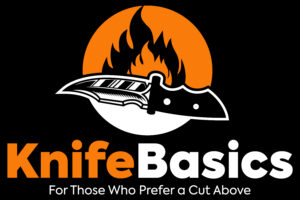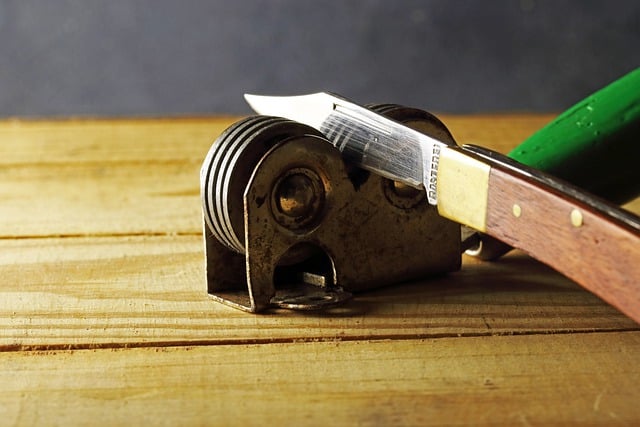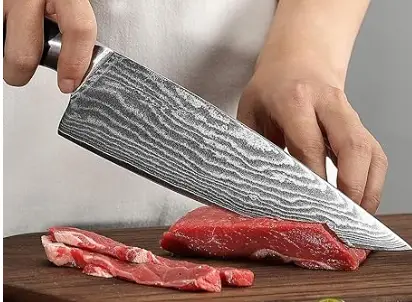H1 steel, also called Myodo H1, is mid-range steel manufactured by Myodo Metal, a Japanese company. It is Precipitation-Hardened stainless steel, meaning that it is rolled without any form of heat treatment.
This steel is very popular in the knife-making industry because it is entirely rustproof, making it an ideal choice for making knives to be used in highly corrosive environments like in the kitchen or areas with salty water.
Spyderco has replaced H1 Steel with a new improved H2 Steel which offers even higher corrosion resistance and slightly improved toughness.
H1 Steel Composition
- Carbon C 0.15%: Increases edge retention, hardness, and tensile strength. It also improves steel resistance to wear, abrasion, and corrosion.
- Chromium Cr 16.00%: Increases hardness, toughness, and corrosion resistance of the blade by forming chromium carbide. The higher than 13% Cr is what makes H1 “stainless”
- Molybdenum Mo 1.50%: It improves machinability and hardening property.
- Manganese Mn 2.00%: Increase wear resistance and toughness, it has effect like that of carbon in steel.
- Nitrogen N 0.10%: Increases Hardness, Nitrogen acts very similar to Carbon in the alloy. N substitutes C in variable amounts to increase hardness.
- Nickel Ni 8.00% Increases toughness of the steel by increasing low temperature property.
- Silicon Si 4.50%: Improves strength of steel
- Copper Cu 0.10% Improves corrosion resistance.
- Phosphorous P 0.04% increases the strength and improves machinability of steel
- Sulphur S 0.03% Improves machinabilty but is normally regarded as an impurity affecting perfomance.
H1 Properties
H1 Steel Hardness
H1 steel hardness ranges between 57-58HRC as per the Rockwell hardness scale. Also, H1 is considered work-hardening steel, meaning that it becomes harder with usage.
H1 Steel Toughness
As a rule of thumb, hard steels offer less toughness and vice versa. 58 HRC is not considered very hard steel, and therefore, H1 offers excellent toughness.
The high toughness of H1 steel is explained by the fact that it does not have brittle carbides but soft carbides formed from the blend of silicone and molybdenum.
With this level of toughness, knifes made from H1 do not break or chip easily even after being used for challenging applications.
H1 Steel Wear resistance
Wear resistance in steel is determined by its hardness. H1 is not very hard steel, and we can expect its wear resistance to be poor.
What’s more, the lack of hard carbides in H1 steel contributes to its poor wear resistance. It does not offer the poorest wear resistance, but it performs lower than many knife steel on the market.
H1 Steel Edge retention
Another area of failure for this steel is in the ability to keep a sharp edge. Due to its low hardness, H1 offers poor edge retention. Be ready for frequent sharpening f you purchase H1 knives. The good news is, H1 can remain sharp for long if it is serrated.
H1 Steel Corrosion resistance
One of the areas where H1 steel performs the best is in its ability to resist rusting and corrosion. While it does not contain a lot of carbon, it has Nitrogen in its composition, which does not react with Chlorine to cause rusting.
What’s more, it contains Chromium and Molybdenum, which enhances the corrosion resistance. If you reside in areas with salty water or are looking for a knife to be used in humid areas; you are in the right place because the varieties of H1 will never disappoint you.
H1 Steel Ease of sharpening
Due to its low hardness, H1 is very easy to sharpen even with simple sharpening tools. Also, if you are practicing knife sharpening skills, this is perfect steel to practice with since it does not give you a hard time.
It is a good thing that H1 is easy to sharpen because it becomes dull very fast. This balance makes it possible to use H1 knives without so much struggle.
H1 steel comparison with other knife steels
H1 vs. O1
H1 beats O1 steel in corrosion resistance, and it is easier to sharpen. On the other hand, O1 shines in toughness and edge retention.
H1 vs. AUS-8
H1 offers better corrosion resistance and toughness than AUS-8. Both steel types are easy to sharpen, but AUS-8 beats its counterpart in edge retention.
H1 vs. VG10
VG10 steel outperforms H1 in edge retention while H1 shines on toughness, corrosion resistance and is easier to sharpen. With this, we can say that H1 is better steel than VG10.
Is H1 Steel Good knife steel?
H1 steel is ideal knife steel and especially in terms of corrosion resistance. If you are on the market for the best fishing or marine knives, look no further because H1 varieties make the best option. However, if you are keen on edge retention and wear resistance, this is not the best choice for you.


